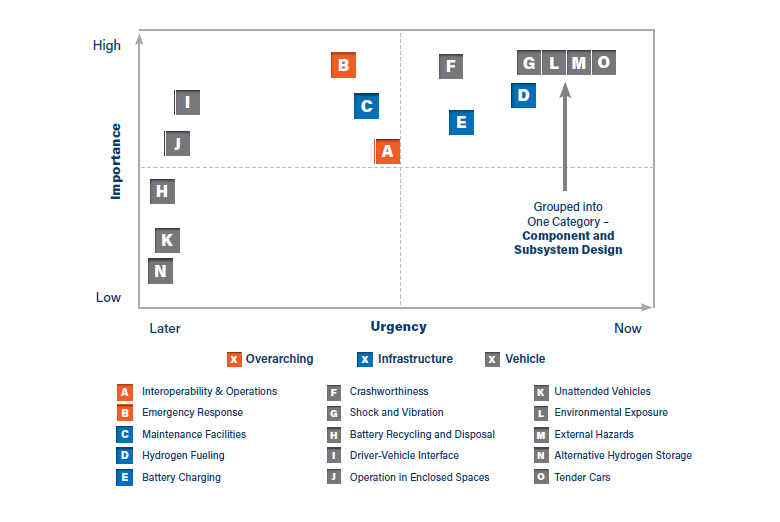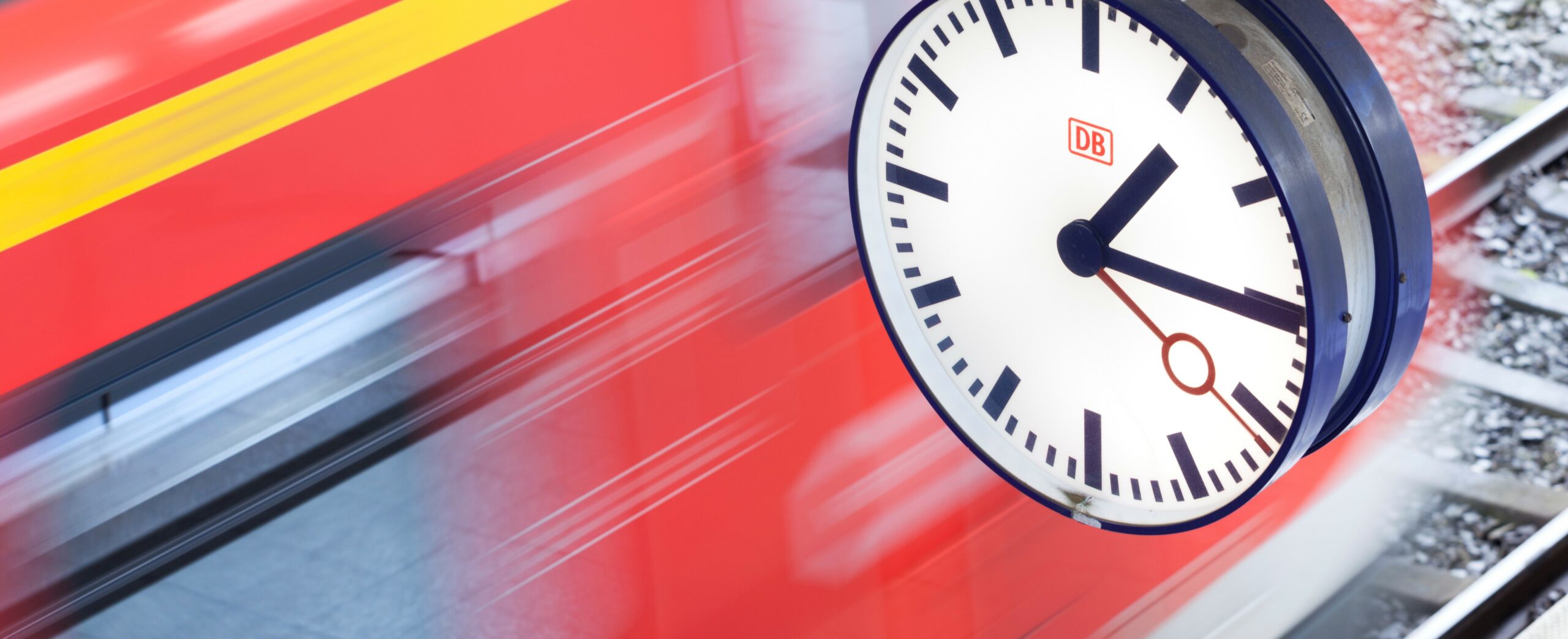Gaps in Standards and Codes for Battery and Hydrogen Technology in Rail Applications
March 21, 2024
DB E.C.O. North America’s in-house Zero Emissions Team worked together to publish a paper through the Canadian Standards Association (CSA) on hydrogen and electrification in the rail industry.
 <em>Decarbonization efforts in rail will rely on hydrogen, batteries, and electrification, making the development of clear standards imperative.</em>
<em>Decarbonization efforts in rail will rely on hydrogen, batteries, and electrification, making the development of clear standards imperative.</em>Decarbonization efforts in rail will rely on hydrogen, batteries, and electrification, making the development of clear standards imperative.
In 2021, Canada’s rail sector emitted 7.8 megatons of CO2e and contributed significantly to the country’s Criteria Air Contaminants, e.g., NOx emissions. In the U.S., the rail sector also contributed significantly to greenhouse gas emissions and criteria air pollutants affecting air quality. Canada follows the U.S. Environmental Protection Agency’s emission standards in rail and many Canadian locomotives do not meet the highest emission standards. Plans are in place to notably reduce rail emissions by 2030 and reach net-zero by 2050, involving zero-emission (ZE) locomotives and rail electrification to support sustainable transport. The report identifies gaps in the existing standards landscape which could become areas of focus for development of specific standards to advance ZE propulsion technologies in the rail industry.
The project had two main parts to help advance ZE rail propulsion: (a) the development of a database of relevant codes, standards, and regulations, and (b) consulting with rail and ZE technology experts to identify and prioritize gaps in the literature. The database was populated through research, industry outreach and automated collection using natural language processing. In addition, feedback was collected from industry stakeholders through interviews and surveys to identify and rank missing elements in current standards, especially concerning hydrogen and battery-powered trains. This approach resulted in a detailed understanding of the existing literature, allowing the authors to highlight gaps in standards and contribute to a plan for future standard development to support the advancement of ZE rail technology.
 The team identified the above gap areas in existing codes and standards, organized by importance and urgency.
The team identified the above gap areas in existing codes and standards, organized by importance and urgency.The team identified the above gap areas in existing codes and standards, organized by importance and urgency.
ZE technologies are key to global decarbonization, with growing importance in the rail sector. However, North America’s rail industry faces challenges like extreme weather, long routes, and demanding duty cycles, which often require high power and large vehicle-based energy storage. As ZE rail vehicles start emerging, it is vital to develop standards focused on safety, design, emergency response, and operations to ensure their effective and safe integration into rail transportation, assisting with addressing some of the challenges the sector faces.
Meet the Authors
Andreas Hoffrichter, PhD
Principal, Head of Center for Net Zero Transformation in Rail and Transit

Heather Aitken, P.Eng
Senior Consultant, Center for Net Zero Transformation in Rail and Transit

Mohamed Hegazi, PhD
Senior Consultant, Management Consulting




